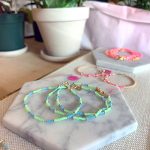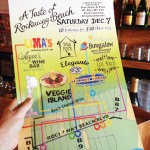I feel overwhelmed by the masses coming to Rockaway the past few weeks. Last summer it was calm in comparison, due to the pandemic. The garbage, the parking situation, and the dunes problem have been upsetting. Before I scare you off though, I’d like to say, I’m not using this forum to complain. This is not Facebook! I’ve been thinking about it and I want to share some of the positives I came across relating to these local issues.

The Garbage: A few Mondays ago I went down to the beach for a morning walk. Even though I’ve seen the overflowing garbage cans and fields of plastic before, I had a “Looney Tunes” bulge eye-pop moment. I started picking up garbage at random, as many of us do. Every hour that goes by, is more opportunity for the plastic to make its way into the water.

While I was there though, I noticed thoughtful, hand-painted wooden signs reminding beachgoers to “keep our beach clean” “take out what you bring in,” and so on. But there was this one sign that stood out. It’s of a turtle with a plastic bag around its neck. The detail in the drawing shows how much the signmaker cares about the ocean and their community. Even the placement of the sign is purposeful. The turtle message appears near a garbage can on the way back up to the boardwalk. It’s on Beach 91st. I can’t get the image out of my head. This artwork has an impact. Thank you to whoever took the time to create this meaningful message.
The Parking: This has been a decades-long debate and conversation on the peninsula. Rockaway Beach is inundated. Uptown has no parking rules during the summer. There is something very wrong with this and it’s not about parking. It’s a social inequality issue. I’ll leave that there. Multi-level parking garages in Rockaway and Far Rockaway for use only four months out of the year are not the answer. The answer is eco-friendly transportation – better public transit infrastructure and easy access, safe bike paths.
On that note, if you’re a visitor just picking up this edition of the paper after driving around for an hour to find a parking spot, consider taking public transportation next time. While we don’t have the best transit to Rockaway, the trip will be less stressful and probably take the same amount of time given “looking for parking.” Better yet, take advantage of the bike paths to Rockaway! There are many stop-offs to check out too – Jamaica Bay, Canarsie Pier, and Floyd Bennett Field.

The Dunes: A few weeks ago the NYC Parks partnered with the Rockaway Beach Civic Association. Together with community members they took action and made “Keep Off The Dunes” signage.” Now you can see the important message clearly on the dunes in the Rockaway Beach area. Thank you and nice swift action!
I also see Rockawayites on social media reminding their network of the importance of dune protection as our main source of erosion protection. I’m hopeful when the Army Corp. of Engineers’ infrastructure project is completed this problem will diminish. The ’90s are slated for groin construction in October!
A big thanks to our community members that are taking action to remind our guests of the appropriate behavior when visiting our beautiful beach town.
Follow me for the local summer seen on instagram – @theglorifiedtomato
This past weekend was
The Beach 91st Street Community Gardens’ plant sale. A big thank you to the garden members who donated plants and helped manage the event. Special thanks to
Walsh Properties, Inc. and Rockaway Beach resident Joanne McGrath for donating so many beautiful perennials and bulbs. Props to The Wave for promoting the sale in The Happenings section last week!
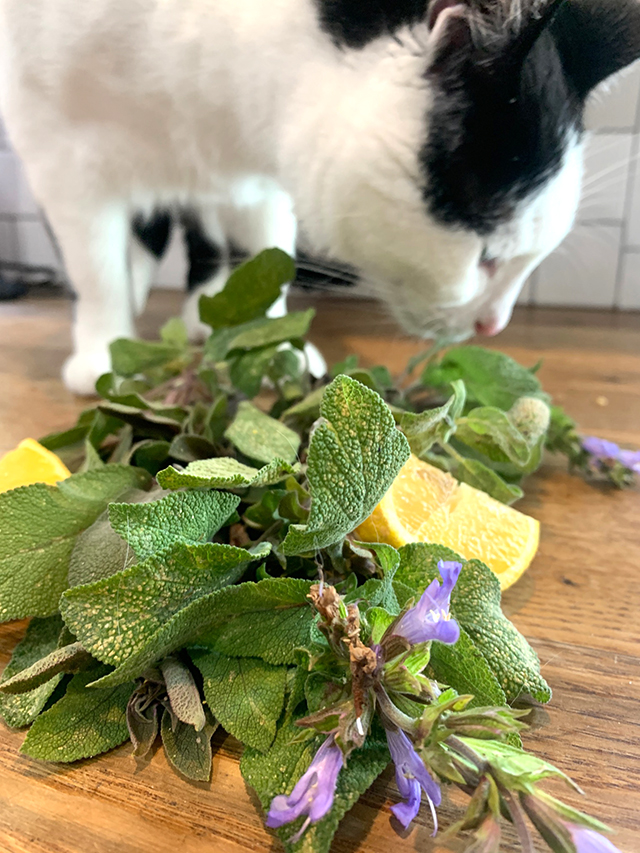
The event was a great success. Most importantly, it was an opportunity for the community to come together and enjoy the garden space, talk about plants, and mingle. It was a fantastic afternoon and we hope to have more community events like this in the future.
While hanging out in the garden, I was talking to fellow member Theresa Racine about my sage (Salvia officinalis). I purchased it a few years ago from Lisena Garden Center (12-5 Cross Bay Blvd, Queens,). It was an impulse buy. I couldn’t help myself because the plant looked so beautiful and robust. I told Theresa I don’t know what to do with the leaves. Essentially, it’s just been ornamental for me. Theresa knows a lot about herbs and recommended making tea with it. I was totally into the tea idea!
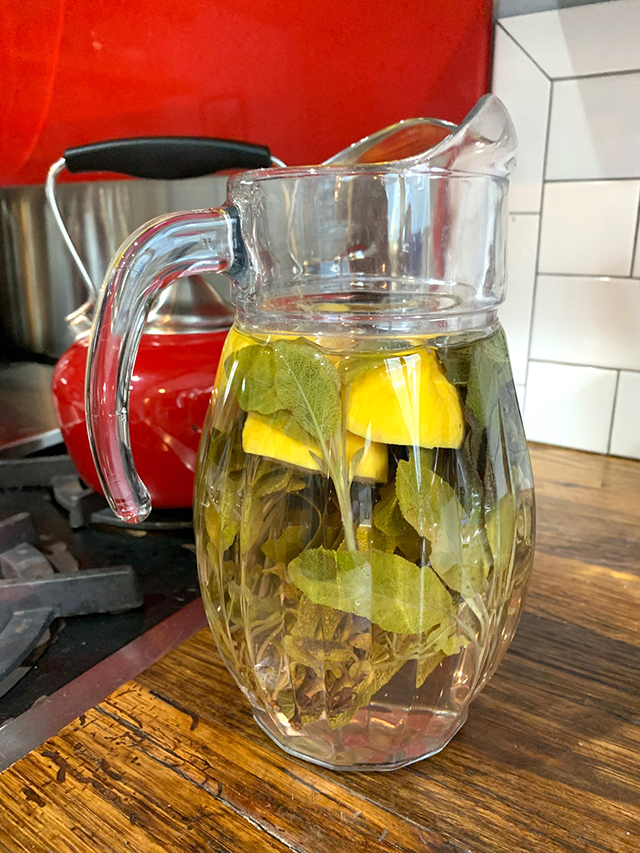
Sage is an aromatic herb in the mint family. It is native to the Mediterranean region. This woody-stemmed shrub can grow two feet tall. It produces delicate purple, pink and sometimes white flowers in early June. The perennial has a rich history of medicinal uses, some of which are for oral health including cold sores, brain alertness, women’s health, skin health, anti-inflammatory properties, and antibacterial effects. The list goes on.
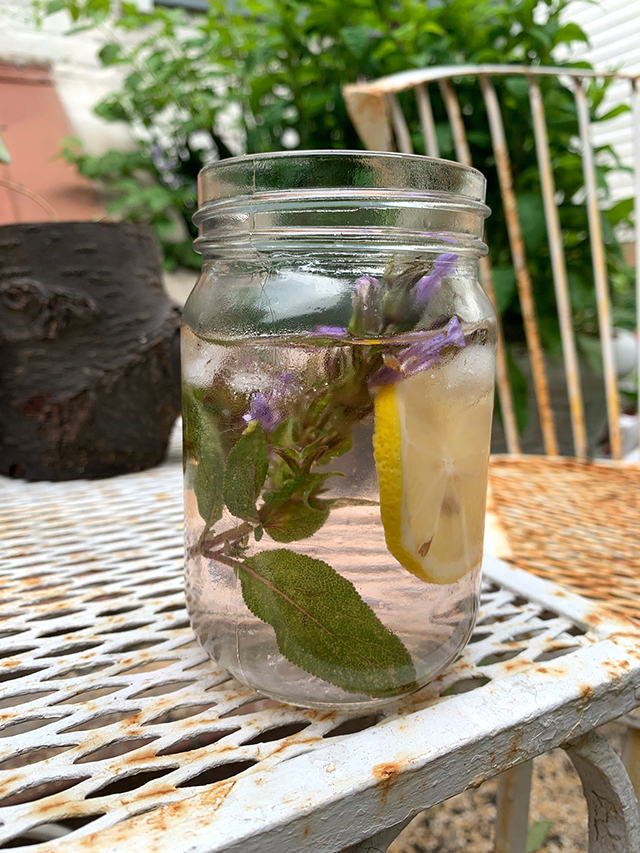
Here’s my recipe for a healthy herbal tea!
Summer Sage Infused Tea With Lemon
Ingredients:
8 cups water
3 large sprigs of sage
2 lemons
Directions: Thoroughly clean the sage and remove any unhealthy leaves. In a teapot, boil eight cups of water. Cut two lemons into halves. Combine the ingredients into the hot water and let the herb infuse for at least two hours. Serve over ice. Save the sage flowers for a beautiful presentation.
Billions of cicadas known as Brood X are emerging after 17 years living in their underground world. When will they arrive in Rockaway?! As a gardener, I’m so intrigued with these rare insects. The ground temperature needs to be about 65 degrees to trigger their surfacing. Which was estimated by scientists to be mid-May in New York. It’s the first week of June now and I haven’t seen any on the peninsula. I’m upset!

Cicadas remind me of an alien species from the Delta Quadrant. Brood X has two distinctive red eyes. And an additional three more smaller eyes on their forehead! Photo via wikipedia.org
During their long life underground, these periodical cicadas are feeding on sap from trees and other plant liquids. The cicadas are molting, forming into their adult selves. The insects emerge into our world to mate. A few weeks later their life cycle ends. Speaking of mating, the distinctive buzz that the cicada makes with a special organ (not their wings) is a call from the males, luring their female counterparts. Some people find the constant “white noise” an annoyance, but I like it! One female lays 400-600 eggs, ensuring the next generation survives.
After all, the sheer numbers of them, once above ground, is a rich food source to many animals, including squirrels, birds, wasps and … humans. Yup, cicadas are edible and people collect them for use in salads, smoothies, and tacos. Maybe this year they’ll be the big foodie craze. The obvious next question… What do they taste like? The internet says the taste is “akin to asparagus.” Note, if you are allergic to shellfish, experts warn not to consume them.
So much has changed in 17 years. What were you doing in 2004? I was one year out of college freaking out, looking for a “real job” while working at Michael’s Craft store. Politics has changed, Rockaway has changed, the environment has changed, the world has been turning while Brood X has been living their calm sap-sucking lives below ground. One interesting and disturbing fact I learned while watching a clip online is that infrastructure, especially in NYC, has changed dramatically over this two decade period. And it will affect some cicadas’ emergence. For instance, if the insects went underground at an undeveloped plot of land and now that site is a highrise building. they will not be able to break free. Entomologists are keeping a close eye on this and have mapped out generations of perocials locations, studying the impact on their numbers and movements. Long Island is supposed to be a cicada hot spot, ugh counter urbanization.
Maybe another reason I’m so fascinated by cicadas is a connection I have with them from my childhood. There are many species of cicadas. The more familiar ones are green and larger than the dark, red-eyed periodicals. As a kid, I remember seeing the green iridescents and their light brown shells everywhere during the summer. So much so that my sisters and I created a cicada hospital and research lab one year. There was this kid down the street named Jimmy. He and his friends would pull the wings off the insects and chase us girls with them in hand. My sisters and I would rescue the injured cicadas and make a hospital for them in the canopy of the evergreens in my parents’ backyard. We would bring them water and make them comfortable, “patient on branch two needs a check-up.” I’m sure our efforts were for naught, but our intentions were genuine. If one passed away, my sister dissected it for her “research.” She wanted to be a veterinarian when she grew up (ended up a doctor!). Our Cicada hospital gave me an appreciation and respect for the value of living things, even the smallest of creatures, and this sentiment has stayed with me throughout my life.
It’s clear I’ve been obsessing over Brood X. I wake up every morning hoping to hear a faint buzz, the indicator of their arrival. Please, if you’ve spotted these beautiful insects in your backyard or somewhere in Rockaway, Broad Channel, or Breezy, please get in contact: @theglorifiedtomato on Instagram.
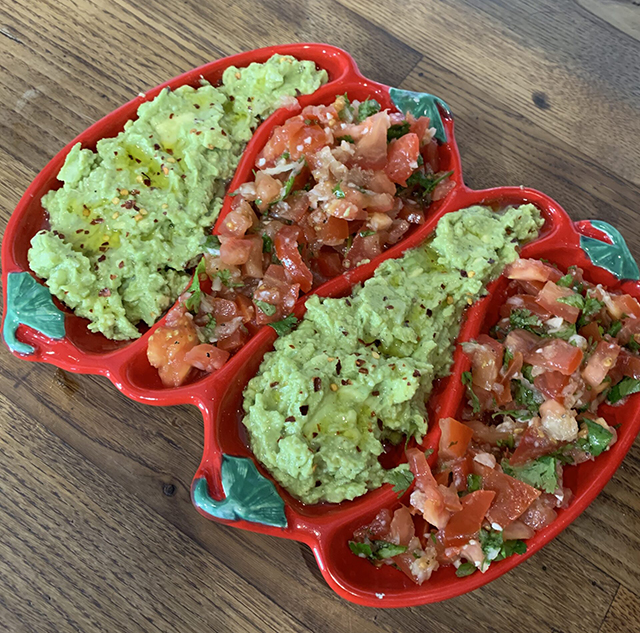
Confession. I’ve made guacamole only a handful of times in the past few years. This is because Key Food, on Beach 87th and Rockaway Beach Blvd. has an absolutely delicious guacamole. Guac is a bit of a chore to make and it’s just so easy to grab the container off the shelf. The one I get has the deli label on it, and they have it on Fridays throughout the weekend.
For a person who is “almost vegetarian,” avocados add richness and satisfaction to meals. Not to mention they contain healthy fats and a multitude of vitamins. There’s actually a name for people like me: “flexitarians.” It’s a style of eating that is mostly plant-based foods while incorporating some animal products but in very small amounts. It has flexibility rather than the strictness of being vegetarian or vegan – as the name implies.
However, for a recent get-together, I was asked to bring guacamole, which in this case involved a large quantity. So I went into mass production mode and made it myself. This recipe is a tasty one!
Don’t skip the olive oil.
Guacamole
Ingredients:
4 avocados – pitted and mashed
1-2 limes, juiced (or lemon)
1 small white onion diced
A handful of fresh cilantro
1-2 garlic cloves minced
A healthy pour of Colavita olive oil
Salt, fresh ground pepper, cayenne pepper and red pepper flakes to taste
Direction: Using a sharp knife and cut through the avocado to the pit, moving around the pit, on the long diameter of the fruit. Squeeze and scoop out the fruit. Combine all the ingredients and mix together. Add a layer of lemon juice on top to prevent the avocado from browning. Refrigerate for one hour before serving.
A few important tips:
- Make the guacamole the day of your party.
- Make sure you have enough lemon or lime juice to cover the top layer. Seal in an airtight container to prevent browning.
- Buy two extra avocados just in case when you open them, they’re overripe. I often think I picked the perfect avocado and then come home and find out it’s not
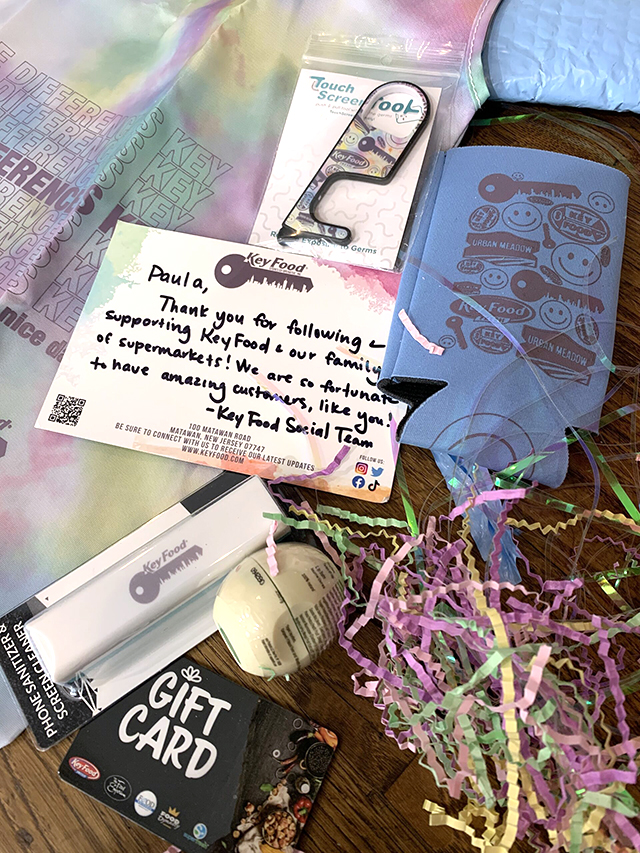
Speaking of Key Food, I have to mention that they contacted me on Twitter and wanted to send me a swag bag because I’m a valued customer. I was surprised and delighted. Then again, I do tweet about their great produce and compressive international isle often – #keyfoodie. Does this mean I’m a food influencer now?
For more recipes follow me day-to-day on Instagram @theglorifiedtomato

















